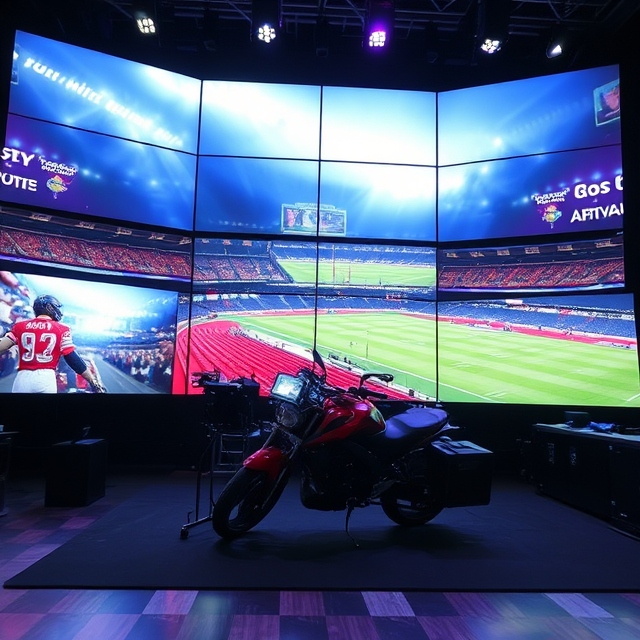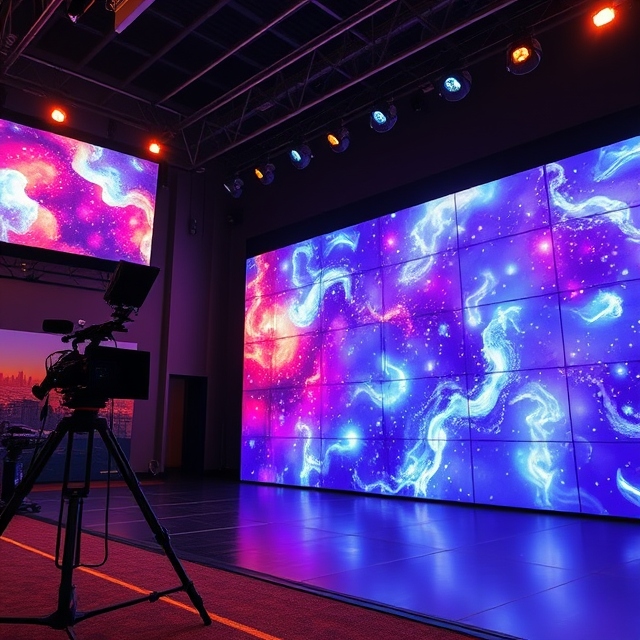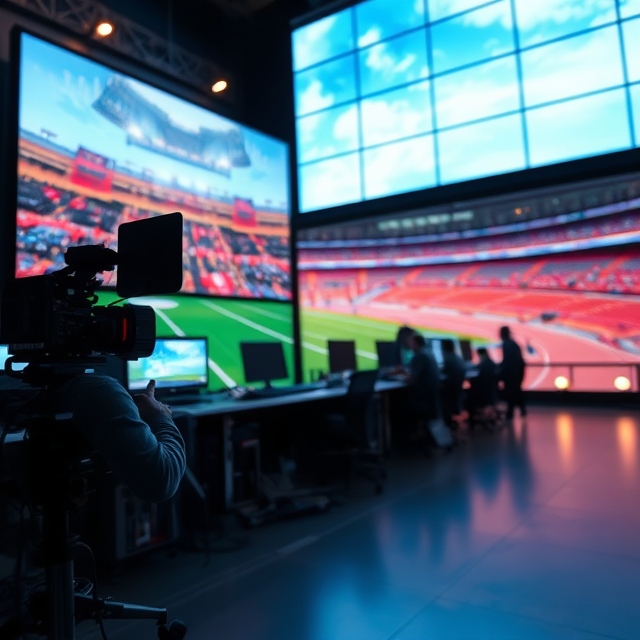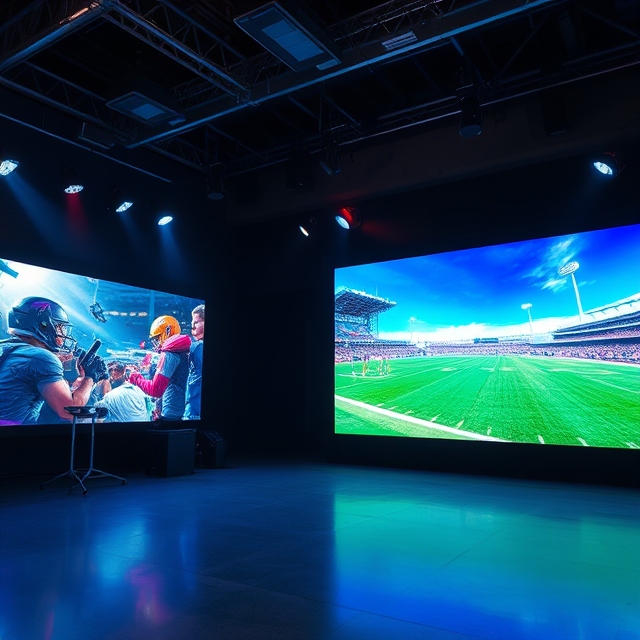- Home
- About Us
- Industries
- Agritech & Smart Farming
- Aquariums & Zoos
- Art & Cultural Exhibitions
- Automotive & Transportation
- Broadcasting & News
- Construction & Real Estate
- Corporate & Offices
- Cultural Heritage & Preservation
- Cybersecurity Operations
- Digital Content Creation & Media
- E-commerce & Online Retail
- Education
- Energy & Utilities
- Entertainment & Media
- Entertainment Arcades & Amusement
- Environmental Monitoring
- Event Management & Conferences
- Fashion & Apparel Retail
- Fashion Retail & E-commerce
- Finance & Banking
- Financial Trading & Stock Exchanges
- Fitness & Wellness
- Food & Beverage
- Food Processing & Manufacturing
- Gaming, Casinos, & Hospitality
- Government & Public Spaces
- Healthcare
- Hospitality & Event Venues
- Insurance
- Legal & Judicial
- Libraries & Community Centers
- Logistics & Supply Chain
- Luxury Cruise & Maritime
- Manufacturing & Industrial
- Meteorology & Climate Research
- Military & Defense
- Mining & Extraction
- Museums & Cultural Centers
- Non-Profit Organizations
- Oil & Gas Industry
- Professional Training & Development
- Public Health & Awareness
- Public Parks & Recreation Areas
- Public Safety & Law Enforcement
- Public Transportation
- Rehabilitation Centers
- Religious & Worship Spaces
- Renewable Energy
- Retail & Shopping Malls
- Retail Banking
- Security & Surveillance
- Social Media & Digital Marketing
- Sports & Stadiums
- Smart Cities & Urban Planning
- Supply Chain & Inventory
- Television & Film Production
- Travel & Hospitality
- FAQ
- Contact Us
- Home
- About Us
- Industries
- Agritech & Smart Farming
- Aquariums & Zoos
- Art & Cultural Exhibitions
- Automotive & Transportation
- Broadcasting & News
- Construction & Real Estate
- Corporate & Offices
- Cultural Heritage & Preservation
- Cybersecurity Operations
- Digital Content Creation & Media
- E-commerce & Online Retail
- Education
- Energy & Utilities
- Entertainment & Media
- Entertainment Arcades & Amusement
- Environmental Monitoring
- Event Management & Conferences
- Fashion & Apparel Retail
- Fashion Retail & E-commerce
- Finance & Banking
- Financial Trading & Stock Exchanges
- Fitness & Wellness
- Food & Beverage
- Food Processing & Manufacturing
- Gaming, Casinos, & Hospitality
- Government & Public Spaces
- Healthcare
- Hospitality & Event Venues
- Insurance
- Legal & Judicial
- Libraries & Community Centers
- Logistics & Supply Chain
- Luxury Cruise & Maritime
- Manufacturing & Industrial
- Meteorology & Climate Research
- Military & Defense
- Mining & Extraction
- Museums & Cultural Centers
- Non-Profit Organizations
- Oil & Gas Industry
- Professional Training & Development
- Public Health & Awareness
- Public Parks & Recreation Areas
- Public Safety & Law Enforcement
- Public Transportation
- Rehabilitation Centers
- Religious & Worship Spaces
- Renewable Energy
- Retail & Shopping Malls
- Retail Banking
- Security & Surveillance
- Social Media & Digital Marketing
- Sports & Stadiums
- Smart Cities & Urban Planning
- Supply Chain & Inventory
- Television & Film Production
- Travel & Hospitality
- FAQ
- Contact Us

Television & Film Production
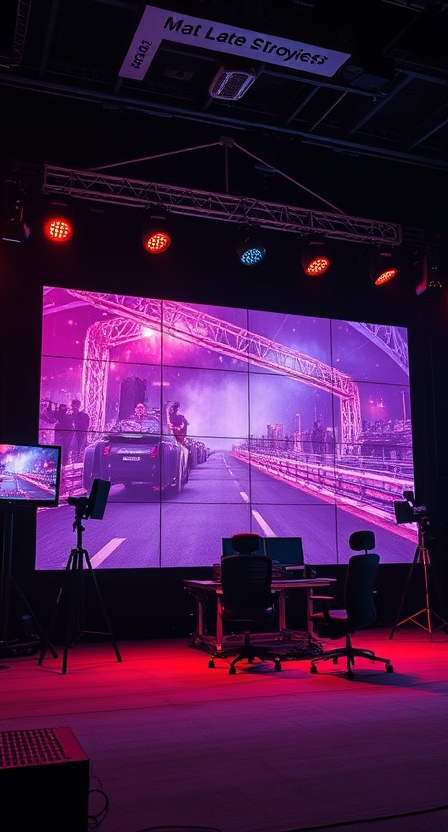
Uses Of Led Display For Television & Film Production
In the world of television and film production, active LED displays have become indispensable tools for creating immersive environments, enhancing live broadcasts, and optimizing production workflows. These displays offer a range of applications that extend far beyond traditional screens, providing dynamic and flexible visual solutions that improve both the creative and technical aspects of media production. From virtual sets and real-time monitoring to on-set communication and visual effects, active LED displays are transforming how films and television shows are made and viewed.
Benefits of Active LED Displays in Television and Film Production
- Real-Time Visualization and Effects:
LED displays enable real-time video and visual effects integration, allowing filmmakers to see the results of their creative choices instantly without the need for time-consuming post-production processes. - Immersive Virtual Sets and Environments:
With advancements in LED technology, virtual production using LED screens has become more accessible. Large, high-definition LED walls can serve as interactive, dynamic backdrops that seamlessly blend with live-action footage, allowing for highly realistic environments without the need for green-screening or location shoots. - Energy Efficiency and Low Heat Emission:
LED screens are energy-efficient and emit less heat compared to traditional lighting setups, making them ideal for extended on-set use, especially in confined spaces like soundstages or control rooms. - High-Resolution and Brightness:
LED displays provide high-quality, high-resolution visuals with excellent brightness, making them suitable for both film production and live broadcast applications, where image clarity is crucial. - Durability and Flexibility:
LED panels are durable, flexible, and customizable, allowing them to fit into a variety of production scenarios, from large-scale set designs to compact on-location shoots.
Applications in Television and Film Production
- Virtual Sets and Backgrounds
Purpose: Create realistic, immersive environments for actors and audiences.
Content Ideas:
- On-Set Virtual Environments: Use large LED screens to create virtual backgrounds for scenes that would otherwise require expensive or impractical location shoots. These virtual sets can include realistic cityscapes, outdoor landscapes, or even fantastical worlds.
- Interactive LED Walls: In combination with motion tracking, LED walls can adjust dynamically to the camera’s movements, offering a more interactive and immersive experience for the actors and crew. This technique has become especially popular in sci-fi and action films.
- Pre-Visualization and Real-Time Effects
Purpose: Streamline production with real-time content and pre-visualization.
Content Ideas:
- On-the-Fly Effects: LED displays allow filmmakers to experiment with lighting, effects, and animations in real-time, offering a more flexible and creative way to plan shots and effects sequences.
- Green-Screen Alternatives: Use active LED displays in place of green screens for certain effects, allowing directors to see the composite elements while filming, significantly reducing post-production time.
- Dynamic Scene Adjustments: Use live feedback from LED screens to adjust scenes in real-time, optimizing camera angles, lighting, and effects as needed.
- Live Broadcast and Sports Production
Purpose: Enhance live broadcasting capabilities with dynamic visuals.
Content Ideas:
- Real-Time Graphics and Scores: LED displays are crucial in broadcasting environments for showing live graphics, scores, and statistics during sports events or news programs.
- Multi-Screen Displays: Use LED screens to show multiple angles of a live broadcast, enhancing viewer engagement with interactive features, such as live audience reactions or social media feeds.
- Virtual Audience Integration: In hybrid or fully virtual events, LED screens can display virtual audiences, creating the illusion of a crowd, which is particularly useful for live television events or during pandemic-related restrictions.
- Set Design and Scenic Construction
Purpose: Enhance set aesthetics and production value with dynamic LED elements.
Content Ideas:
- LED Set Pieces: Use LED panels integrated into set designs to create dynamic, changing elements in the background or foreground, such as futuristic city lights, advertising billboards, or changing landscapes.
- Flexible Screen Layouts: Customize LED screens for different set designs, allowing production teams to change the visual elements of a set on the fly without major re-building or scene transitions.
- Interactive Elements: Design LED screens into the set to act as interactive elements for characters, such as digital displays for futuristic tech, or to visually enhance plot points.
- Video Walls for Film Sets
Purpose: Enhance on-set communication and visual references.
Content Ideas:
- On-Set Communication: Use video walls to display camera angles, live shots, or reference material for directors, producers, and crew members during the filming process.
- Scene Previews: Display real-time video playback and previews of scenes to ensure continuity and consistency, aiding in lighting and scene composition adjustments.
- Special Effects and VFX Integration
Purpose: Use LED displays to enhance or augment special effects.
Content Ideas:
- Interactive VFX: Incorporate live video feeds and CGI effects onto LED screens during filming, allowing for real-time integration of visual effects into scenes, making the process more collaborative and efficient.
- Augmented Reality (AR) and Virtual Reality (VR): Use LED displays for AR/VR integration, allowing filmmakers to visualize how certain elements will interact with the environment before finalizing the production.
- Digital Signage for Studios and Control Rooms
Purpose: Manage and streamline production processes in real-time.
Content Ideas:
- Real-Time Scripting and Teleprompter Display: Use LED screens for displaying scripts, teleprompter text, or live cues for hosts, performers, or crew members.
- Production Monitoring: Display real-time data such as shot lists, schedules, or cue timings in control rooms, ensuring the smooth running of live productions or multi-camera setups.
- Promotional and Marketing Displays
Purpose: Create compelling content for marketing campaigns, movie premieres, and studio branding.
Content Ideas:
- Film Trailers and Posters: Display promotional content such as trailers, posters, and sneak peeks of upcoming movies or television shows, engaging viewers in high-traffic areas like malls, theaters, or outdoor billboards.
- Interactive Displays for Fans: Set up LED screens at film premieres or conventions where fans can interact with the film’s content through touchscreens, showing exclusive behind-the-scenes footage, interviews, or fun interactive games.
- Mobile Production and Outdoor Filming
Purpose: Enable filming in outdoor or mobile settings.
Content Ideas:
- Portable LED Displays: Use portable, high-resolution LED screens for filming in outdoor environments where standard lighting and screens might be impractical. These displays can act as light sources or backdrops, providing additional flexibility.
- Weather-Resistant Displays: Use rugged LED screens on outdoor sets or film locations, especially for shoots in challenging weather conditions, ensuring high visibility and protection from elements.
Features
- List Item
- List Item
- List Item
- List Item
Advantages
- List Item
- List Item
- List Item
- List Item
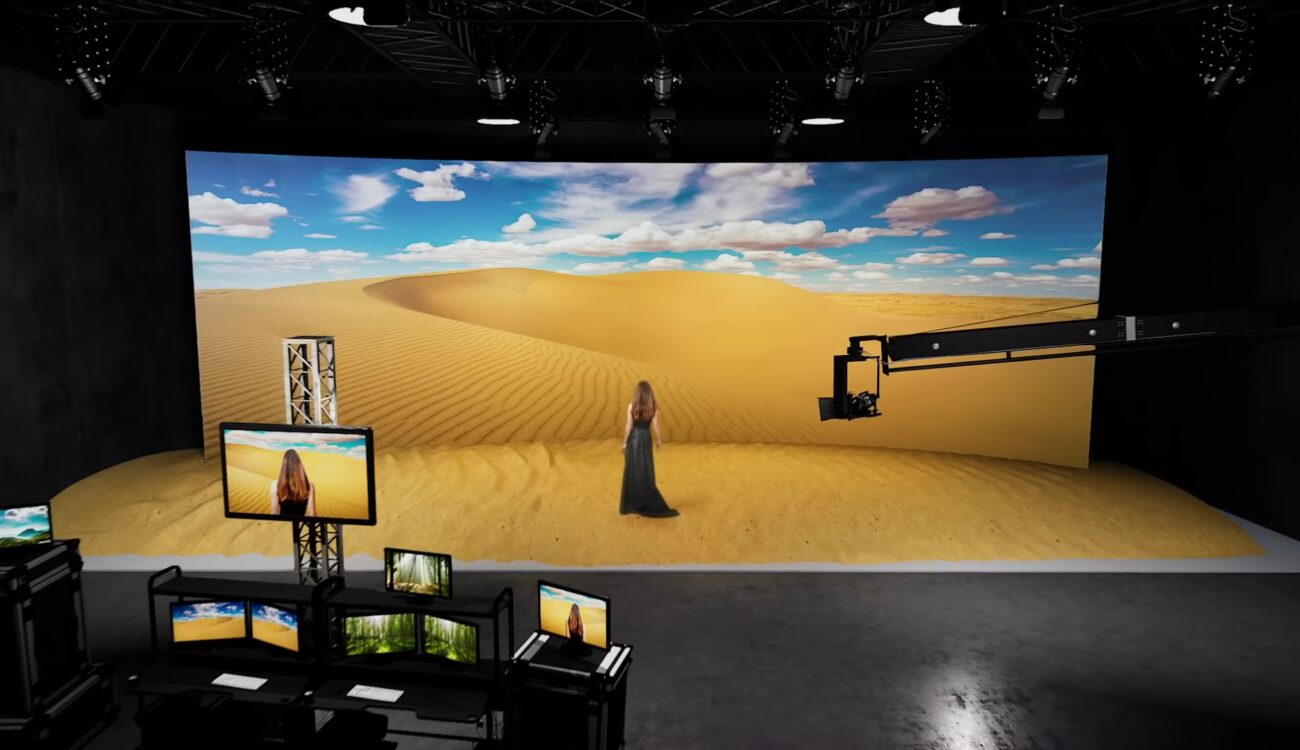
Placement Tips for Television and Film Production
- Soundstages and Set Designs:
Install large, flexible LED walls or screens to serve as immersive backdrops for both virtual production and dynamic set elements. - Production Control Rooms:
Use smaller LED screens in control rooms to monitor live footage, review scripts, or display production cues for seamless coordination. - On-Set Locations:
Position LED screens in areas where they can be used for live communication, such as to preview scenes, display real-time camera feeds, or assist with visual effects. - Broadcasting Studios:
Place LED displays in high-traffic areas, like newsrooms or sports studios, for showing live data, scores, or breaking news content in high-visibility zones. - Event Premises and Film Festivals:
Use LED displays for promotional purposes at film premieres, festivals, or conventions, showcasing trailers, interviews, and interactive content for attendees.
Conclusion
Active LED displays are transforming the television and film production industries by offering versatile, high-quality, and energy-efficient solutions for set design, live broadcasting, special effects, and more. These displays provide immersive environments, real-time effects, and enhanced communication on-set, helping filmmakers, broadcasters, and producers work more creatively and efficiently. Whether used for virtual production, on-the-fly content creation, or post-production enhancements, LED technology continues to revolutionize how stories are told and experienced in the world of entertainment.
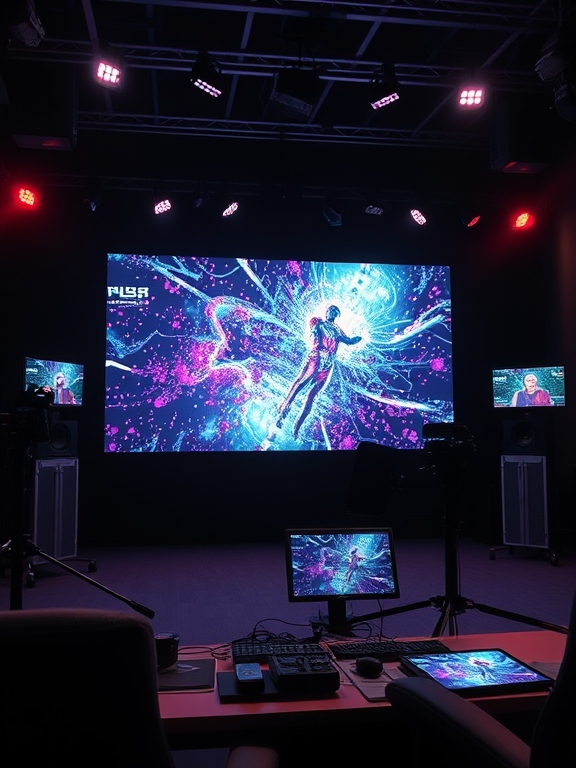
illuminits LED Walls?
Technology
There are three primary LED video wall technologies: ultra-narrow bezel LCD, rear-projection cubes, and direct-view LED displays. Ultra-narrow bezel LCD is the most cost-effective option.
Size
The great thing about illuminits video walls is that they are modular, so you can get them in any size or aspect ratio you want.
Support
The heavier the video wall system becomes, the more panels there are. This puts additional strain on the infrastructure that supports it. illuinits offers the best in-time assistance.
Service
Even high-definition video walls can have problems. This can be a minor or major issue. As a result, Aero provides a variety of comprehensive service packages that ensure minimal downtime at a low cost. Types Of LED Displays
